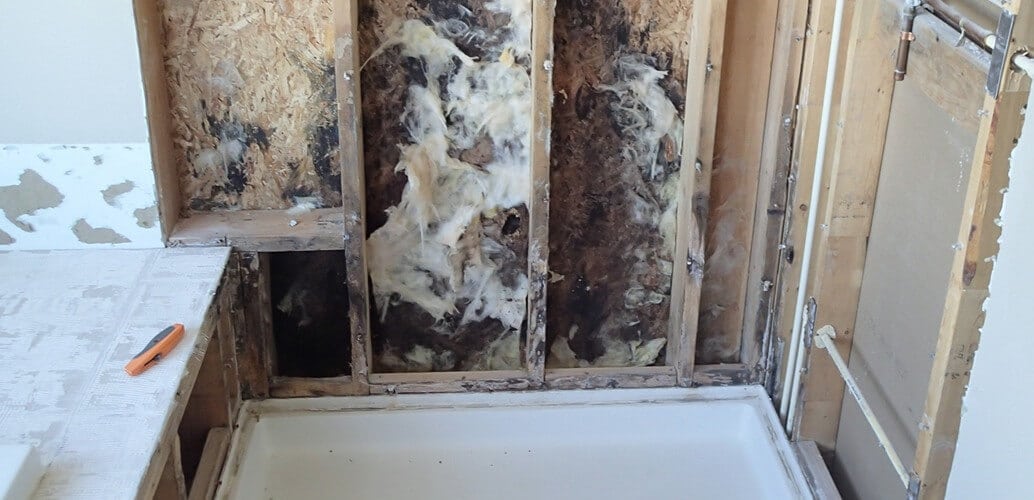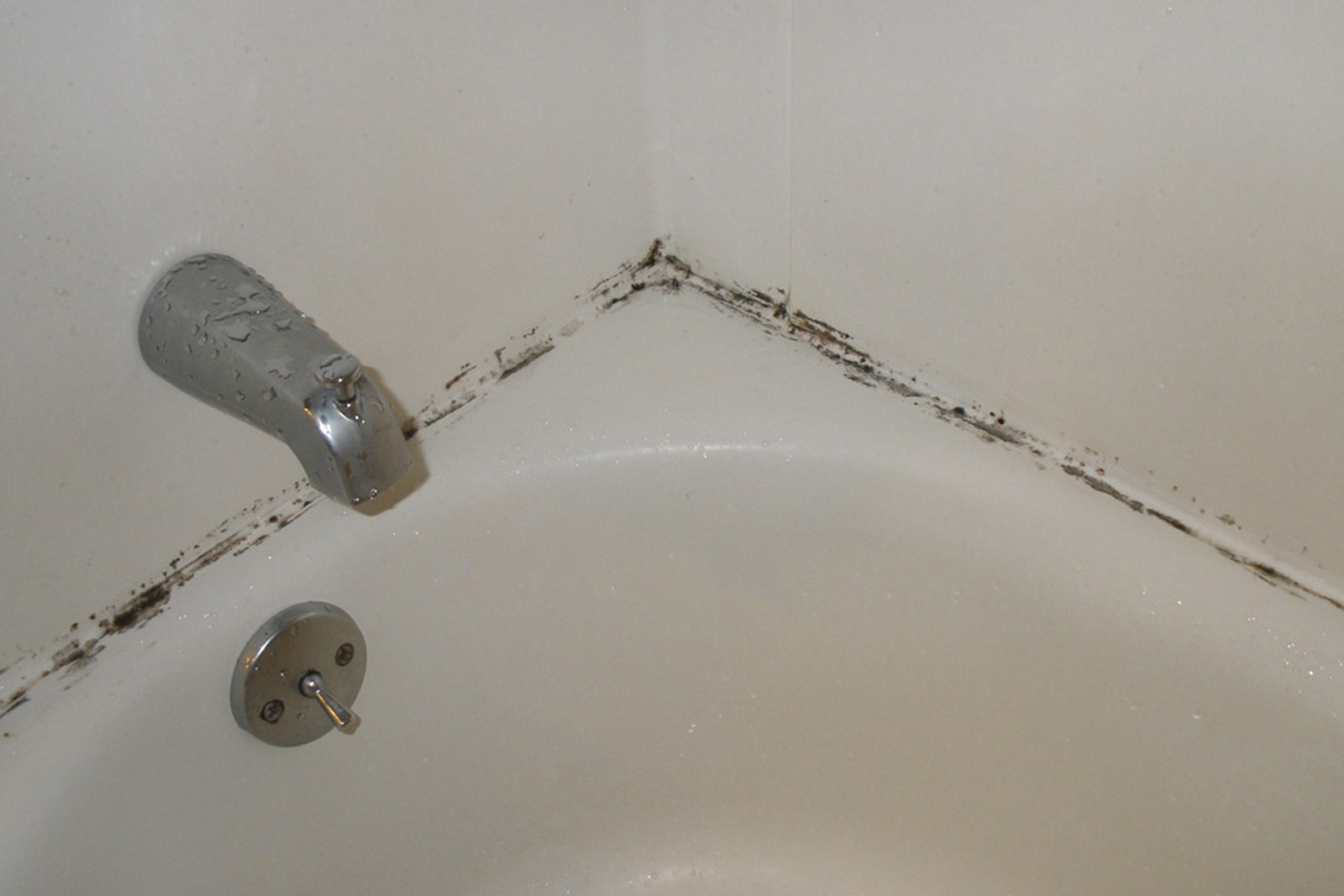Understanding Red Mold: Red Mould In Bathroom

Red mold, a common sight in humid environments like bathrooms, can be a source of concern due to its potential health risks. It’s crucial to understand the characteristics, types, and health hazards associated with this type of mold to take appropriate steps for prevention and remediation.
Characteristics of Red Mold
Red mold, a type of fungi, thrives in damp and warm conditions. It typically appears as reddish-pink or orange patches on surfaces, often accompanied by a musty odor. It can grow on various materials, including drywall, grout, wood, and even fabric. Red mold is known for its fast growth rate, spreading rapidly in favorable conditions.
Types of Red Mold
Several types of red mold are commonly found in bathrooms, each with its unique characteristics.
- Serratia marcescens: This type of red mold is often found in bathrooms due to its ability to thrive in moist environments. It appears as a reddish-pink or orange slime, often accompanied by a strong odor.
- Fusarium: This type of mold is known for its red or pink coloration and can cause various health issues. It often appears as a powdery or fluffy growth on surfaces.
- Neurospora crassa: This type of mold is commonly found in bathrooms and other damp environments. It appears as a bright red or orange growth, often accompanied by a musty odor.
Health Risks Associated with Red Mold Exposure
Exposure to red mold can pose several health risks, particularly for individuals with respiratory issues or allergies.
- Respiratory problems: Red mold can trigger allergic reactions, leading to symptoms like coughing, sneezing, wheezing, and difficulty breathing. In some cases, it can even lead to asthma.
- Skin irritation: Direct contact with red mold can cause skin irritation, rashes, and itching.
- Eye irritation: Red mold spores can irritate the eyes, causing redness, itching, and watery eyes.
- Other health issues: In rare cases, exposure to red mold can trigger more serious health problems like headaches, fatigue, and even neurological issues.
Identifying Red Mold in a Bathroom
Recognizing red mold is crucial for taking prompt action.
- Red or pink patches: Red mold typically appears as reddish-pink or orange patches on surfaces.
- Musty odor: Red mold often emits a musty or earthy odor.
- Slimy texture: Some types of red mold can have a slimy texture.
- Fast growth: Red mold grows quickly in favorable conditions, so it’s important to address any signs of it promptly.
Causes and Prevention

Red mold, a common sight in bathrooms, is a persistent problem that requires understanding to effectively combat. Its presence not only affects the aesthetic appeal of your bathroom but also poses potential health risks. To address this issue, we need to delve into the root causes of red mold growth and develop a comprehensive prevention strategy.
Understanding the Conditions that Foster Red Mold, Red mould in bathroom
Red mold thrives in damp, humid environments with poor ventilation. The presence of moisture, whether from leaks, condensation, or even just regular showering, creates the perfect breeding ground for this fungus. The spores of red mold are present in the air, and when they land on a damp surface, they begin to grow and spread.
Preventing Red Mold in Bathrooms
Preventing red mold in bathrooms requires a multi-pronged approach, addressing the underlying causes and creating an environment that discourages its growth. Here’s a step-by-step guide:
- Ensure Proper Ventilation: Adequate ventilation is crucial for removing moisture from the air. This can be achieved by ensuring your bathroom has an exhaust fan that is properly functioning and used after every shower. Opening windows for natural ventilation is also beneficial, especially during warmer months.
- Minimize Moisture: After showering, wipe down surfaces, including walls, floors, and shower stalls, to remove excess water. This simple step significantly reduces the moisture available for mold growth.
- Repair Leaks Promptly: Leaks, whether from faucets, pipes, or the roof, create constant moisture, making it difficult to control mold growth. Addressing these leaks immediately is essential.
- Use a Dehumidifier: In areas with high humidity, using a dehumidifier can help reduce the moisture levels in the air, making it less hospitable for mold growth.
- Clean Regularly: Regular cleaning with a mild bleach solution or a commercial mold cleaner helps remove spores and prevent mold from establishing itself.
Effective Cleaning Products for Red Mold Removal
When red mold has already established itself, it’s important to use effective cleaning products for removal. Some popular and effective options include:
- Bleach Solution: A diluted bleach solution (1 part bleach to 10 parts water) is a highly effective disinfectant for killing mold spores. Apply the solution to the affected area, let it sit for 10-15 minutes, and then scrub with a brush. Rinse thoroughly with water.
- Commercial Mold Cleaners: Several commercial mold cleaners are available in the market. These cleaners are specifically designed to kill mold and mildew and are generally safe for use in bathrooms. Follow the instructions on the product label carefully.
- Borax: Borax is a natural cleaning agent that is effective in killing mold. Mix borax with water to create a paste and apply it to the affected area. Let it sit for several hours, then scrub with a brush and rinse thoroughly.
Red Mold Removal and Remediation

Red mold, while unsightly, can be effectively removed with the right approach. Understanding the steps involved in red mold removal and remediation is crucial to ensuring a safe and healthy living environment. This section will provide a comprehensive guide to tackling red mold in your bathroom.
Safety Precautions for Red Mold Removal
Before attempting any red mold removal, it’s crucial to prioritize safety. Red mold can release spores that can trigger allergies and respiratory issues. It’s best to wear protective gear when handling red mold.
- Wear a respirator mask to prevent inhaling mold spores. Choose a mask with an N95 rating for optimal protection.
- Protect your eyes with safety goggles.
- Wear gloves to prevent skin contact with mold.
- Keep the area well-ventilated to minimize spore exposure.
- Avoid disturbing the mold as much as possible. Doing so can release more spores into the air.
Red Mold Removal Process
Red mold removal requires a multi-step process that addresses both the visible mold and the underlying cause of its growth.
- Isolate the area: Seal off the affected area with plastic sheeting to prevent mold spores from spreading. This will contain the mold during the cleaning process.
- Prepare the area: Remove any loose or porous materials that have been affected by mold. This includes items like towels, rugs, and curtains. These items should be discarded or cleaned according to the manufacturer’s instructions.
- Clean the affected area: Use a solution of bleach and water (1 part bleach to 10 parts water) to clean the affected surfaces. Ensure the solution reaches all corners and crevices. Alternatively, you can use a commercial mold cleaner. Allow the cleaning solution to sit for 10-15 minutes before scrubbing the area thoroughly with a stiff-bristled brush.
- Dry the area: After cleaning, ensure the area is completely dry. Use a fan or dehumidifier to speed up the drying process. Mold thrives in damp environments, so eliminating moisture is crucial to prevent its recurrence.
- Seal the area: After the area has dried, apply a sealant to prevent future mold growth. Choose a sealant that is specifically designed for bathrooms and is mildew-resistant. This will create a barrier against moisture and mold spores.
Professional Red Mold Remediation
For extensive mold infestations, it’s recommended to seek professional help. Professional mold remediation services offer specialized expertise and equipment to effectively remove and contain mold.
- Inspection and assessment: Professionals will conduct a thorough inspection of the affected area to determine the extent of the mold infestation and identify the underlying cause of mold growth.
- Mold removal and containment: They will use specialized equipment and techniques to remove mold from surfaces and materials. This may involve using HEPA-filtered vacuums, air scrubbers, and other specialized equipment.
- Moisture control: Professionals will address the root cause of the mold growth, which is often excessive moisture. This may involve repairing leaks, improving ventilation, and implementing other moisture control measures.
- Restoration and reconstruction: In severe cases, professional remediation may involve replacing damaged materials or structures to prevent future mold growth.
Assessing the Effectiveness of Red Mold Removal
After completing the removal process, it’s essential to assess its effectiveness to ensure the mold has been eradicated.
- Visual inspection: Look for any signs of remaining mold. This may include discoloration, black spots, or a musty odor.
- Moisture testing: Use a moisture meter to check for any remaining moisture in the affected area. Mold thrives in damp environments, so ensuring the area is completely dry is crucial.
- Air quality testing: Consider having the air quality tested to determine if mold spores are still present in the air. This can help ensure the removal process was successful.
Red mould in bathroom – Red mold in the bathroom can be a real eyesore, and it’s a sign that moisture is lingering in the air. But there’s a simple way to improve air circulation and reduce humidity: install a curved bathroom curtain rod.
This stylish upgrade allows for a wider opening, letting more air flow in and out, helping to dry the space faster and combat those pesky mold spores.
Red mold in your bathroom can be a real eyesore, and it’s more than just an aesthetic issue. It can be a sign of excess moisture, which can lead to other problems. Consider incorporating half curtains for bathroom to help control humidity and create a more inviting atmosphere.
Not only do they add a touch of style, but they can also help to prevent the growth of mold by allowing air to circulate and dry out the space. By addressing both the aesthetic and practical aspects of your bathroom, you can create a healthier and more enjoyable space.